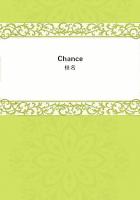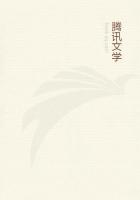Secondly,the motion of the eye contributes to its beauty,by continually shifting its direction;but a slow and languid motion is more beautiful than a brisk one;the latter is enlivening;the former lovely.Thirdly,with regard to the union of the eye with the neighbouring parts,it is to hold the same rule that is given of other beautiful ones;it is not to make a strong deviation from the line of the neighbouring parts;nor to verge into any exact geometrical figure.
Besides all this,the eye affects,as it is expressive of some qualities of the mind,and its principal power generally arises from this;so that what we have just said of the physiognomy is applicable here.
XXI
Ugliness It may perhaps appear like a sort of repetition of what we have before said,to insist here upon the nature of ugliness;as I imagine it to be in all respects the opposite to those qualities which we have laid down for the constituents of beauty.But though ugliness be the opposite to beauty,it is not the opposite to proportion and fitness.For it is possible that a thing may be very ugly with any proportions,and with a perfect fitness to any uses.Ugliness I imagine likewise to be consistent enough with an idea of the sublime.But I would by no means insinuate that ugliness of itself is a sublime idea,unless united with such qualities as excite a strong terror.
[Footnote 1:Part IV.sect.25.]
XXII
Grace Gracefulness is an idea not very different from beauty;it consists of much the same things.Gracefulness is an idea belonging to posture and motion.
In both these,to be graceful,it is requisite that there be no appearance of difficulty;there is required a small inflection of the body;and a composure of the parts in such a manner,as not to encumber each other,not to appear divided by sharp and sudden angles.In this ease,this roundness,this delicacy of attitude and motion,it is that all the magic of grace consists,and what is called its je ne scai quoi;as will be obvious to any observer,who considers attentively the Venus de Medicis,the Antinous,or any statue generally allowed to be graceful in a high degree.
XXIII
Elegance And Speciousness When any body is composed of parts smooth and polished without pressing upon each other,without showing any ruggedness or confusion,and at the same time affecting some regular shape,I call it elegant.It is closely allied to the beautiful,differing from it only in this regularity;which,however,as it makes a very material difference in the affection produced,may very well constitute another species.Under this head I rank those delicate and regular works of art,that imitate no determinate object in nature,as elegant buildings,and pieces of furniture.When any object partakes of the above-mentioned qualities,or of those of beautiful bodies,and is withal of great dimensions,it is full as remote from the idea of mere beauty;I call it fine or specious.
XXIV
The Beautiful In Feeling The foregoing deion of beauty,so far as it is taken in by the eye,may be greatly illustrated by describing the nature of objects,which produce a similar effect through the touch.This I call the beautiful in Feeling.It corresponds wonderfully with what causes the same species of pleasure to the sight.
There is a chain in all our sensations;they are all but different sorts of feelings calculated to be affected by various sorts of objects,but all to be affected after the same manner.All bodies that are pleasant to the touch,are so by the slightness of the resistance they make.Resistance is either to motion along the surface,or to the pressure of the parts on one another:if the former be slight,we call the body smooth;if the latter,soft.The chief pleasure we receive by feeling,is in the one or the other of these qualities;and if there be a combination of both,our pleasure is greatly increased.This is so plain,that it is rather more fit to illustrate other things,than to be illustrated itself by an example.The next source of pleasure in this sense,as in every other,is the continually presenting somewhat new;and we find that bodies which continually vary their surface,are much the most pleasant or beautiful to the feeling,as any one that pleases may experience.The third property in such objects is,that though the surface continually varies its direction,it never varies it suddenly.The application of anything sudden,even though the impression itself have little or nothing of violence,is disagreeable.
The quick application of a finger a little warmer or colder than usual,without notice,makes us start;a slight tap on the shoulder,not expected,has the same effect.















